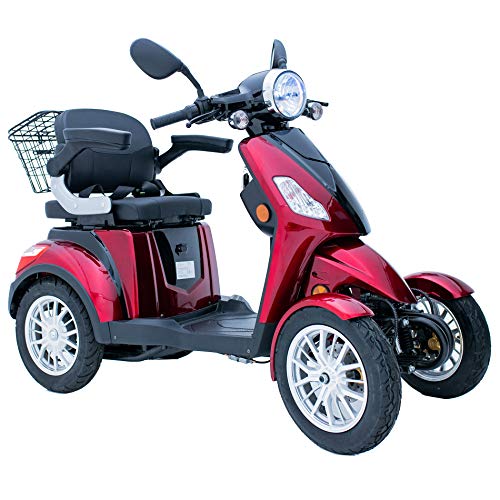Scooter Green Power
Scooters offer an enjoyable and secure way to travel. They are also eco green. It is essential to do your research prior to buying one.
Scooters are not carbon-free as they appear. They have hidden costs. The mining and production processes used by the batteries used to power electric scooters produce significant emissions. Transporting scooters from places where they are used to charging stations is also a contributor to their environmental footprint.
Battery Life
The battery is one of the main components in any scooter, and has a big impact on how green your scooter really is. This is because when the battery fails, it releases toxic substances into the air, which can have a huge ecological and economic impact.

Electric scooters are extremely energy efficient, consuming only just a tiny fraction of the energy that cars do when driving the same distance. This helps reduce carbon dioxide, climate change and traffic congestion. However, they do produce a small amount of carbon dioxide when charging. If the energy source is from renewable sources, it can make e-scooters greener.
Many scooters also come with interchangeable batteries that can be used to charge other scooters within the fleet. This reduces the necessity for companies to transport the batteries to recharge. Certain companies are also experimenting with hyper-local energy production. The grid could use the power stored in batteries to balance demand and supply.
If you intend to make use of your scooter for longer journeys, then consider purchasing larger capacity batteries, or a second one that can be swapped. You can travel longer distances and not have to recharge the battery as often. This is especially important if you reside in a region that has harsh weather conditions. It is also a great idea to charge the battery prior to when you store it for weeks or months. If you don't it could be difficult for the battery to be able to hold a charge when you need it again. green mobility scooter could be unpleasant and also risky.
In general electric scooters are greener than other forms of transportation. They emit fewer greenhouse gasses which contribute to global warming, and require less raw materials to make. They can be charged with clean energy which could reduce their carbon footprint. When contemplating the sustainability of a scooter, it's important to consider its entire lifecycle. This includes the manufacturing and the energy required to charge it and its disposal.
Design
The design of electric scooters could have a big impact on their green power credentials. For instance, scooters that have regenerative braking systems can convert some of the energy that would otherwise go to waste into a longer battery life so they can travel further on each charge. Many scooters are also designed for shorter distances, thus reducing the number of trips to the vehicle needed. And, unlike traditional vehicles, scooters emit no carbon dioxide during use.
It is nevertheless important to consider the environmental impacts of the entire lifecycle of an electric scooter. This includes the extraction of raw materials, manufacturing and disposal at the end of its life. The production of lithium Ion batteries is energy-intensive and can result in habitat destruction as well as soil and water pollution as well as greenhouse gases. green mobility scooters and mining raw materials can have a significant effect on the environment.
Another issue with scooters is their lack of durability. The average scooter lasts only few months on the road before it is discarded. This could require scooter companies to extract more aluminum and engage in more shipping and other resources-intensive activities. Since the majority of scooters are rented, rather than owned by the owner, they must be taken in, and then transported (often in vehicles) to a charging station when their batteries are exhausted.
Scooters could contain hazardous wastes that can pose a risk to the public health and the environment. If the waste isn't properly recycled, it may end up in landfills or rivers, where humans and wildlife could be at risk.
Scooters are more beneficial to the environment as a whole than conventional vehicles. However there are a few issues to be resolved before they can be considered completely environmentally friendly. If all scooters were made from 100% recyclable material and the power source that drives them is derived from renewable sources, they will be a carbon-free form of transportation.
Maintenance
The price of electric scooters is less than the typical vehicle. However, it still needs routine maintenance. The battery pack is the most important element to be considered. It will need to be replaced and charged regularly at the end of its lifespan. This is also influenced by the speed controller. If it isn't working properly it can affect the performance of the scooter.
If the scooter ceases to function or stops functioning while riding, it usually indicates that the battery pack is defective. A faulty fuse or battery charger could be the reason. Check that the charger's indicators are green (charging) and not red (off). Even if you do not use the scooter, it is a good practice to charge it every time it is stored.
A defective normally closed switch on the brake lever is a frequent issue. To test for this, disconnect the wire from the switch for the brake lever and connect the two terminals in the controller's connector the wire is unplugged from. If the scooter continues to run the switch might be malfunctioning.
Throughout the day, scooter companies provide people with the ability to drive cars or trucks and haul back into their workspaces any electric scooter that has run out of power. This type of service helps keep their fleet in good condition. It also lets them recharge the batteries for the next trip. Many consumers do not have this option and must change their scooters if they run out of power.
